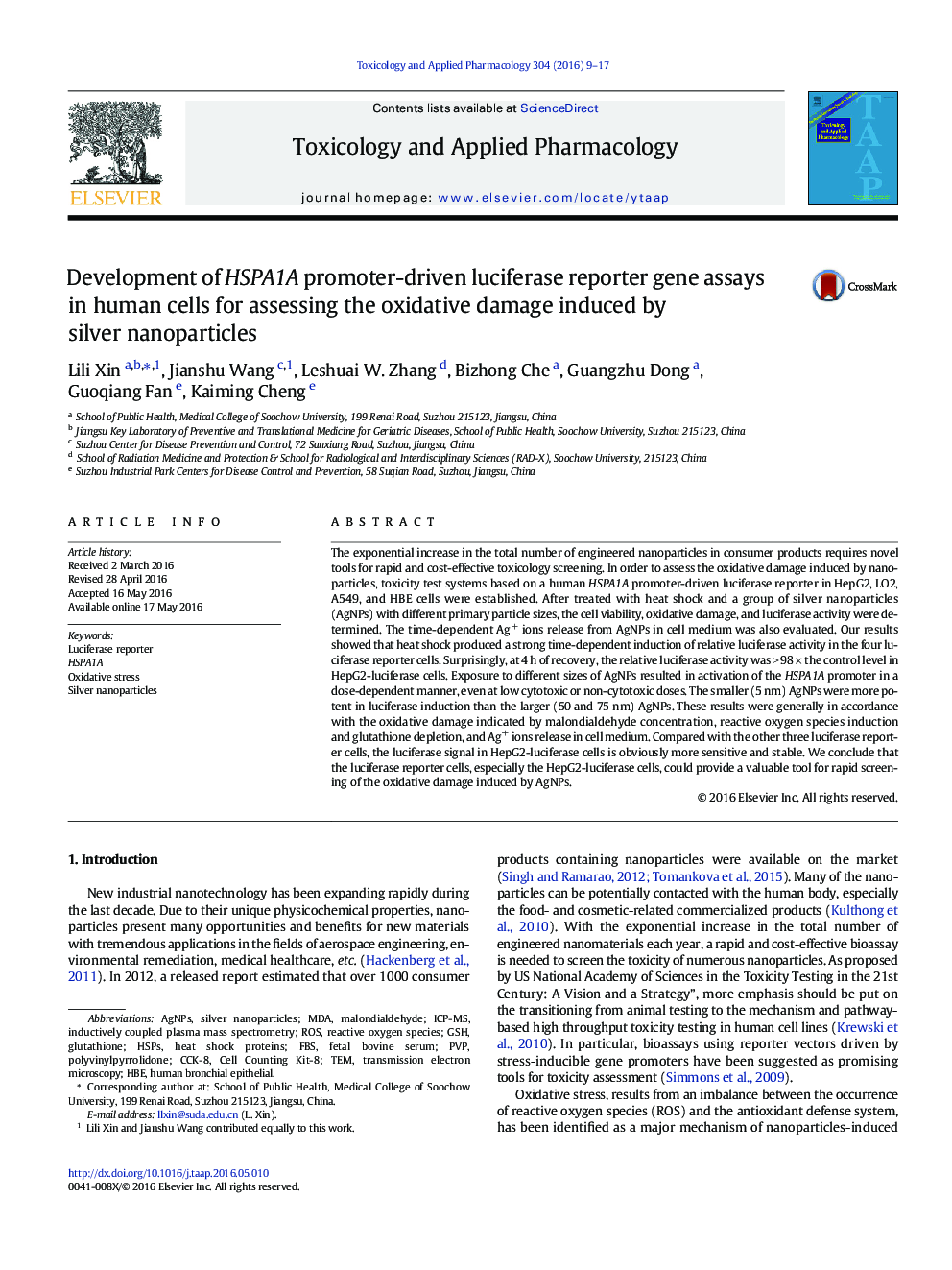| کد مقاله | کد نشریه | سال انتشار | مقاله انگلیسی | نسخه تمام متن |
|---|---|---|---|---|
| 2568020 | 1561158 | 2016 | 9 صفحه PDF | دانلود رایگان |

• We established the stable HSPA1A promoter-driven luciferase reporter cells.
• Silver nanoparticles induced dose-dependent increases in luciferase activity.
• HSPA1A promoter activity is a sensitive and responsive indicator of oxidative stress.
• HepG2-luciferase cells can be used to assess the toxicity of silver nanoparticles.
The exponential increase in the total number of engineered nanoparticles in consumer products requires novel tools for rapid and cost-effective toxicology screening. In order to assess the oxidative damage induced by nanoparticles, toxicity test systems based on a human HSPA1A promoter-driven luciferase reporter in HepG2, LO2, A549, and HBE cells were established. After treated with heat shock and a group of silver nanoparticles (AgNPs) with different primary particle sizes, the cell viability, oxidative damage, and luciferase activity were determined. The time-dependent Ag+ ions release from AgNPs in cell medium was also evaluated. Our results showed that heat shock produced a strong time-dependent induction of relative luciferase activity in the four luciferase reporter cells. Surprisingly, at 4 h of recovery, the relative luciferase activity was > 98 × the control level in HepG2-luciferase cells. Exposure to different sizes of AgNPs resulted in activation of the HSPA1A promoter in a dose-dependent manner, even at low cytotoxic or non-cytotoxic doses. The smaller (5 nm) AgNPs were more potent in luciferase induction than the larger (50 and 75 nm) AgNPs. These results were generally in accordance with the oxidative damage indicated by malondialdehyde concentration, reactive oxygen species induction and glutathione depletion, and Ag+ ions release in cell medium. Compared with the other three luciferase reporter cells, the luciferase signal in HepG2-luciferase cells is obviously more sensitive and stable. We conclude that the luciferase reporter cells, especially the HepG2-luciferase cells, could provide a valuable tool for rapid screening of the oxidative damage induced by AgNPs.
Journal: Toxicology and Applied Pharmacology - Volume 304, 1 August 2016, Pages 9–17